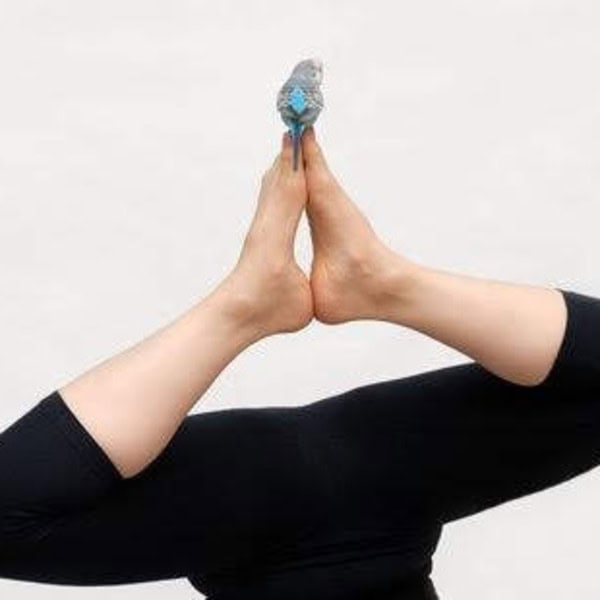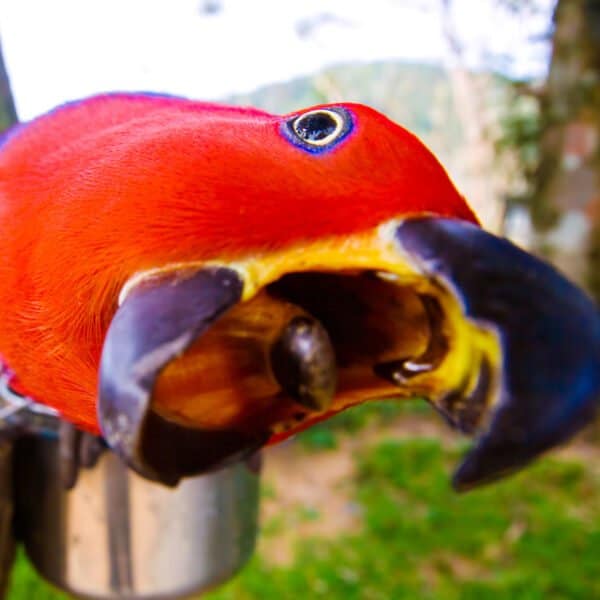Last Updated on by Catherine Tobsing
Here are some ways to exercise your pet bird, keeping in mind the size of the species:
General Exercise Tips
“They” say a Bigger cage is better: Provide the largest cage possible for your bird. This allows them room to flap their wings, climb, and perch in different locations.
This makes sense IF you and or everyone in your household works most of the day and the bird is “stuck” in its cage all day long.
Conversely, our Ringneck and Quaker spend from 10:00 to 4:00 in relatively small ages about 20 X 20 each but they love to be at the center of attention as customers and shippers come and go throughout the day.
By 4:00 they are ready to come upstairs to their 3-foot wide aviaries where we play kindergarten cop letting each bird out one at a time.
See, Chili the Quaker thinks the best place in the world is Keto’s (the Ringneck) birdcage be it upstairs or downstairs if both cage doors are open Chili will make a beeline into Keto’s cage, perch there, and do…….nothing.
This stresses Keto out to no end, and so it goes.
While they are out of their cages upstairs, with no exterior doors to open, they have the run err the flight of the place.
Barney has the smallest cage of them all about 18 X 18.
I let him out when I uncover the 4 upstairs birdcages around 7 AM and if we don’t go anywhere (out of the house) together, he’s out for 12 to 13 hours so his cage size matters, not.
- Out of cage time: Allow your bird supervised out of cage time each day. A good rule of thumb is at least 1-2 hours per day, but this can vary depending on the species.
- Wing trimming: Wing trimming may be necessary for some birds, especially large birds, to prevent them from injuring themselves during flight. However, a properly wing-trimmed bird can still flap its wings for exercise.
- Safe play area: When your bird is out of the cage, make sure the room has been bird-proofed. Close windows and doors, toilets, cover electrical cords and remove any toxic plants or household items that could be harmful to your bird.
Species Specific Exercises
- Small birds (budgies, finches, parakeets): Provide climbing structures with ropes, ladders, and swings. Offer foraging toys that require them to manipulate objects to get to a treat. Scatter treats around the cage and play area to encourage them to fly and explore.
- Medium birds (conures, caiques, lovebirds): In addition to climbing structures and foraging toys, provide bird-safe swings, preaches of varying textures and sizes, and bird gyms with hoops and rings to fly through.exclamation You can also teach them simple tricks to keep them mentally stimulated.
- Large birds (macaws, Amazons, cockatoos): These birds require the most space to exercise. Large parrot cages or flight cages are ideal. Provide play gyms with climbing structures, swings, preaches, and foraging toys. You can also train them to target sticks or hoops to encourage flight.
Written and Approved by the Windy City Parrot Content Team
Author Profile
Latest entries
 The Traveling BirdJune 26, 2025Can You Name 5 Parrot Species That Are Living Wild in the USA?
The Traveling BirdJune 26, 2025Can You Name 5 Parrot Species That Are Living Wild in the USA? Bird BehaviorJune 26, 2025How is it Parrots Are Problem Solvers Social Animals and Even Use Tools?
Bird BehaviorJune 26, 2025How is it Parrots Are Problem Solvers Social Animals and Even Use Tools? Bird & Parrot AnatomyJune 25, 2025How a Tiny Chemical Modification Makes Parrots Nature’s Living Paintings
Bird & Parrot AnatomyJune 25, 2025How a Tiny Chemical Modification Makes Parrots Nature’s Living Paintings PigeonsJune 20, 2025How Do Parrots Thrive in Cities Outside Their Native Habitats?
PigeonsJune 20, 2025How Do Parrots Thrive in Cities Outside Their Native Habitats?




